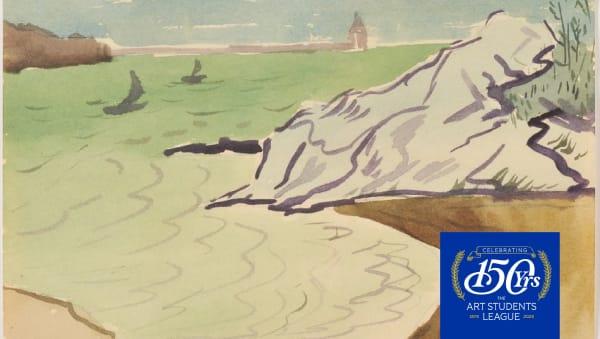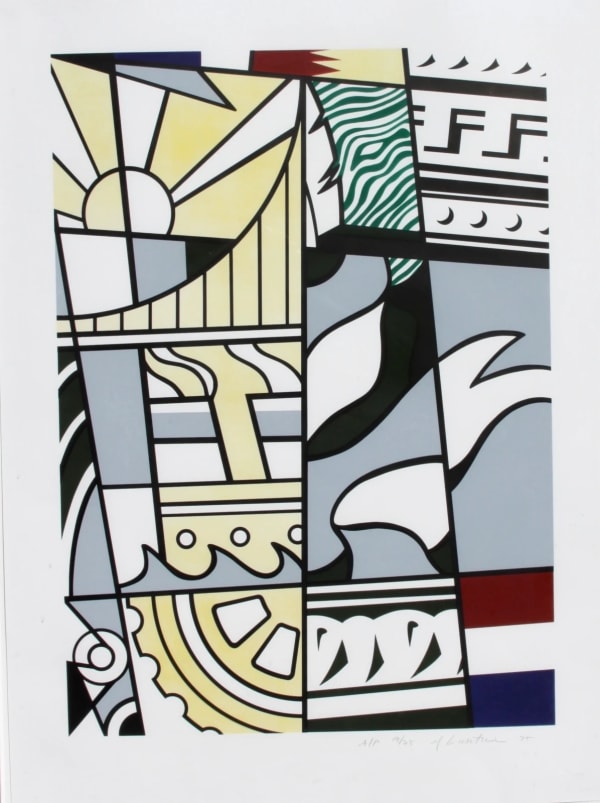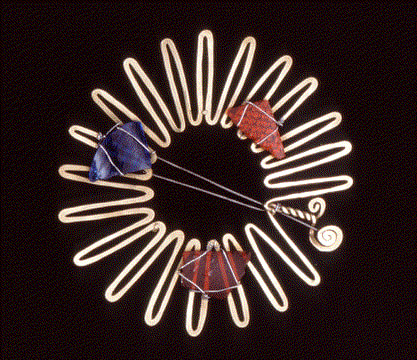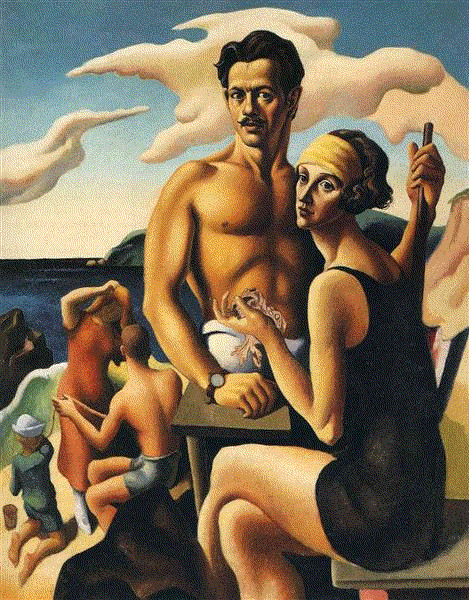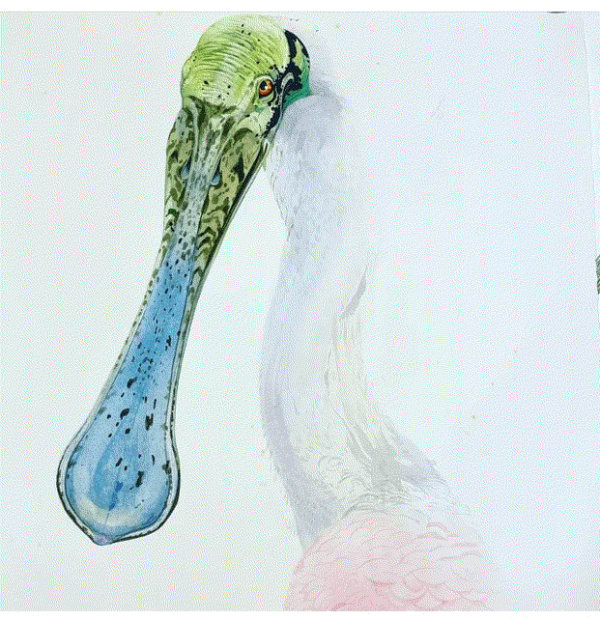Alexander Calder
Early Life
Alexander Calder was born in Lawton, Pennsylvania, in 1898, to a family of talented artists. His grandfather, Alexander Milner Calder was a sculptor, who emigrated from Scotland to Philadelphia in 1868. He is best known for his monumental sculpture of William Penn that sits on top of the tower of Philadelphia’s City Hall. Calder’s father, Alexander Stirling Calder, was commissioned to create many public monuments, including a sculpture of George Washington for the Washington Square arch in New York and ornamental works for Vizcaya, the James Deering estate in Miami.
His mother, Nanette Lederer Calder, was a portrait painter, who studied at the Sorbonne and his sister, Margaret, helped found the UC Berkeley Art Museum. Calder himself began making moving sculptures when he was young. Though he is best known for his mobiles and sculptures, he drew and painted in oils and gouache throughout his life. By the time he was four, Calder had already begun to sculpt in clay. When the family moved to Pasadena, California, in 1906, Calder was given the cellar of the house to use as a workshop. For several years, the family moved back and forth between New York and California, to allow Stirling to complete commissioned works. The family made sure that Calder always had a studio to work in.
Education and Career
After graduating from Lowell High School in San Francisco, Calder enrolled at the Stevens Institute of Technology in Hoboken, New Jersey, to study mechanical engineering. Following his graduation from Stevens, in 1919, Calder took various engineering jobs. In 1922, he worked as a mechanic on a ship that sailed from New York to San Francisco. The scenic beauty that he saw during his voyage inspired him to resume his art work. He moved to New York to study at the Art Students League. In 1926, Calder moved to Paris to study at the Academie de la Grande Chaumiere.
During his time in Paris, he created the Calder Circus, composed of moving circus figures, which Calder used as a performance work. It was purchased by the Whitney Museum in 1986.
In 1929, Calder had his first solo exhibit of mobiles at the Galerie Billiet in Paris. On a boat trip back to New York, Calder met Louisa James, the grandniece of author Henry James. The couple was married in 1931. In 1933, they returned to the States and settled in a farmhouse in Roxbury, Connecticut. They had two daughters, Sandra born in 1935, and Mary, born in 1939. Calder did many enormous commissioned sculptures, both in the States and in Europe. Calder died unexpectedly, in New York, in 1976, at the home of his daughter, Mary. His death came shortly after the opening of a retrospective of his work at the Whitney Museum.
Legacy
Calder’s work can be seen in and outside of major venues throughout the world. He was awarded the Medal of Freedom, but refused to accept it because of his opposition to the Vietnam War.
Send me more information on Alexander Calder
-

The Art Students League Celebrates 150 Years
Showcased works by Milton Avery, Adolph Gottlieb and other Art Students League Alumni June 20, 2025The Art Students League of New York is celebrating its 150th anniversary with an exhibition of works by many of its most talented artists. The...Read more -

Roy Lichtenstein Commemorations Continue
Robert Motherwell's Prints and Books at the NY Public Library May 2, 2025I don’t have big anxieties. I wish I did. I’d be much more interesting. – Roy Lichtenstein (1923-1997) Dorothy Lichtenstein established the Lichtenstein Foundation in...Read more -

The Works of Kaloki Nyamai at Surovek Gallery
Venet Jewelry Exhibit at the Norton. The AGB Expands in Lakeland January 23, 2025Kenyan artist Kaloki Nyamai (b.1985) had his New York debut and first solo exhibition at the Cohan Gallery last March. His works depict daily life...Read more -

Thomas Hart Benton and Loie Hollowell at the Hirshhorn
November 14, 2024I have a sort of inner conviction that for all the possible limitations of my mind and the disturbing effects of my processes, for all...Read more -

A Thimbleful of Red at Surovek Gallery
November 9, 2024A thimbleful of red is redder than a bucketful. - Henri Matisse An exhibit at the Nassau County Museum of Art called Seeing Red: Renoir...Read more -

Milton Avery and the Federation of Modern Painters and Sculptors
August 14, 2024“ I like to seize the one sharp instant in Nature, to imprison it by means of ordered shapes and space relationships. To this end...Read more -

The Work of Scott Kelley and Alexander Calder at Surovek Gallery
August 1, 2024Scott Kelley (b. 1963) has spent much of his life living in places where the winters are cold: he was born in Binghamton, New York,...Read more


